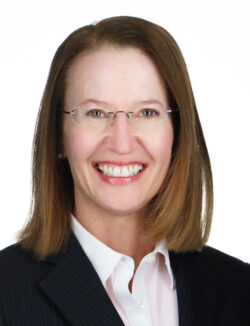APRN Professional Liability Risk: What Health Care Risk Managers Must Understand

Nursing is the backbone of the health care world.
Many up-and-coming health care professionals find their way into nursing because they have a deep, inherent desire to help patients heal. Often, nurses are on the front line of people’s darkest moments — injury, illness and the like — and some of their biggest joys, like a new baby or the happy declaration of remission.
Nurses aiming to grow in their profession and thereby extend that level of care go on to become certified nurse midwives, nurse practitioners, certified registered nurse anesthetists or clinical nurse specialists.
Collectively, this group of health care heroes is called advanced practice registered nurses, or APRNs. And their number is expanding.
“Growth of APRNs has been phenomenal,” said Wendy Alderman, RN, senior risk management consultant, ProAssurance. “From 2010 to 2017, the number of APRNs doubled, and then it doubled again from 2017 to 2023.”
According to the American Association of Nurse Practitioners, as of November 2023, licensed APRNs totaled 385,000 in the U.S. According to the Bureau of Labor Statistics, this profession is growing faster than all other professions except one.
This is great news for society, which is already experiencing a physician shortage. In fact, over half of U.S. states have authorized full-practice authority to APRNs. This means APRNs now have the capability to step in and provide care without a collaboration agreement with — or the supervision of — a physician.
However, with such growth, both in numbers and responsibility, APRNs are becoming increasingly exposed to professional liability risk.
APRNs and Professional Liability
Doctors and other physicians understand the very real and ever-daunting risk of professional liability. They are not new to the litigious world of medical malpractice suits: The American Medical Association (AMA) reported that one in three physicians face the possibility of being sued at some point in their career, even if the claim results in no finding of fault.
Nuclear verdicts amounting to millions of dollars complicate the issue, as does social inflation, which is driving bigger payouts in court. For APRNs who are starting to step into the medical spotlight, professional liability insurance may feel like a foreign world.
“From the APRN perspective, they may not be as aware of some of the professional liability risks,” said Alderman. “It’s hard to find those risks outlined for this particular group unless they can find literature in the form of, say, white papers from insurance companies that have done the research.”
But that literature, like APRNs’ rise, is in its infancy.
Those responsible for managing risk for facilities employing APRNs must do their part to truly understand the breadth of this exposure.
“The malpractice risks of APRNs are not as well known, because these risks have not been identified in the literature,” Alderman explained further. “What we can do is extrapolate their risks by reviewing research performed on the risks of physicians.”
Risk Mitigation and Management for APRNs

Wendy Alderman, RN, Senior Risk Management Consultant, ProAssurance
Alderman said one way to start implementing risk mitigation strategies for APRNs is to see which states have granted full-practice authority to these practitioners. They may have broader risks than states with reduced or restricted practice. However, it is important to keep in mind that “risk mitigation strategies and addressing patient safety events will be the same strategies we would provide physicians,” she said.
“Risk managers need to understand the practice environments and some of the cultural issues within their organization,” she said. For example, “Hospitals may be within a state allowing full practice, but perhaps the hospital policy states that the APRN must still work under a supervising physician. So within their environment, they don’t have full-practice authority.”
Additionally, it’s key to keep a pulse on the continued growth of the APRN profession. Risk managers must be mindful of what APRNs within their organization are being asked to do, especially because of potential discrepancies between state law and hospital policy, coupled with the growing need for APRN services.
“They may be placed in clinical positions that make identifying their scope of practice unique when they care for patients,” Alderman said, “and it may influence the risks of physicians.”
When it comes to a suit, a plaintiff’s attorney is not looking at the intricacies of who did what during care; most likely, if an APRN is named on the patient’s chart, the APRN will be named on the lawsuit. Likewise, if there is a managing physician, they can face the same scrutiny regardless of who provided the care.
Above all, risk managers are keen to talk through their organization’s unique dynamics with their underwriters. Knowing the levels at which all physicians and APRNs are operating will only bolster risk managers’ mitigation strategies and result in better, more thorough policies.
The APRN Promise
While the APRN role grows exponentially, the good news is that these professionals are good at what they do.
Another thing to note: The profession is predominantly female. While not a precursor for less risk, this statistic may mean APRNs will face less scrutiny than their male counterparts, according to the research Alderman cited:
“Generally speaking, females within the medical profession have a slightly lower rate of facing a professional liability claim,” Alderman shared. To make that more concrete, the AMA reported that “less than one-quarter (23.8%) of women had previously been sued, compared to more than a third (36.8%) of men. On average, women had fewer claims (42 per 100 physicians) than men (75 per 100 physicians).”
It’s possible that this is due in part to female physicians reportedly being better equipped to establish rapport with patients. Alderman cited research from Gerald Hickson of Vanderbilt University, which supports this notion. “Physicians who are able to establish rapport are less likely to be sued,” she noted of the research.
Still, the full picture of APRN professional liability risk has yet to be seen. Good risk management requires getting ahead of potential pitfalls now while the profession is growing and the need for APRNs is on the rise.
“I view APRNs as an emerging risk,” Alderman said. “While we can extrapolate their risk based upon physician risks that are already known, time will tell whether or not the same risks are applicable to them.” &










